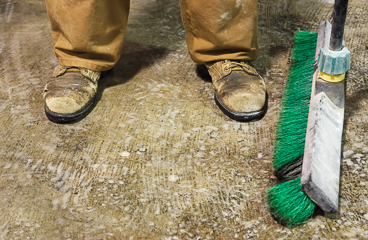
What is asbestosis?
Asbestosis is a long-term (chronic) lung disease that can get worse over time. It is caused by breathing tiny asbestos fibers into the lungs. The fibers scar the inside of the lungs, which makes it hard to breathe.
Many years may pass between the time you are exposed to the fibers and when you feel the effects of the disease. The amount of time can depend on how long the exposure was and how many fibers you breathed in.
Smoking makes the disease get worse faster and increases the chances of it leading to lung cancer.
What causes asbestosis?
Asbestos is a material that was commonly used for insulating and soundproofing older homes and buildings. It was also used as a material in manufacturing. Many people have been exposed to asbestos while working in mining, construction, and the military, and by removing asbestos from old buildings.
Asbestos can crumble and send fine fibers into the air. When you breathe in the fibers, they can irritate your lungs. Over time, your lungs get scarred, which makes the lungs less flexible for breathing.
What are the symptoms?
Symptoms may include:
- A dry cough that doesn't go away.
- Shortness of breath that gets worse when you exercise or exert yourself.
- Loss of appetite.
- Weight loss.
- Pain in the chest when you take a deep breath.
How is asbestosis diagnosed?
Tests to diagnose asbestosis include:
- A detailed medical history to identify any exposure you have had to asbestos. Your doctor may ask questions about your past homes, workplaces, jobs, and hobbies.
- Lung function tests. These tests measure how much air you can breathe into your lungs and how quickly you can breathe it out. They also measure how much oxygen enters your bloodstream through the lungs.
- X-rays or a CT scan of your lungs.
- Examination of sputum (mucus) under a microscope.
- A lung biopsy. In this test, a small amount of tissue is removed from the lung and looked at under a microscope.
How is it treated?
Asbestosis can't be cured, but it can be treated. The treatment is to help you feel better and keep the disease from getting worse.
Your doctor may:
- Give you oxygen to help you breathe easier.
- Give you medicine to loosen thick mucus in your lungs.
Caring for yourself at home
You can take these steps to help yourself:
- Don't smoke, and don't allow smoking in your house or car. If people who smoke live in or visit your home, ask them to smoke outside.
- Get vaccinated against COVID-19, the flu, and pneumonia.
- Avoid any more exposure to asbestos in your home or workplace.
Follow-up care is a key part of your treatment and safety. Be sure to make and go to all appointments, and call your doctor if you are having problems. It's also a good idea to know your test results and keep a list of the medicines you take.
Where can you learn more?
Go to http://www.healthwise.net/patientEd
Enter G895 in the search box to learn more about "Learning About Asbestosis".
Current as of: October 24, 2024
Author: Ignite Healthwise, LLC Staff
Clinical Review Board
All Ignite Healthwise, LLC education is reviewed by a team that includes physicians, nurses, advanced practitioners, registered dieticians, and other healthcare professionals.

